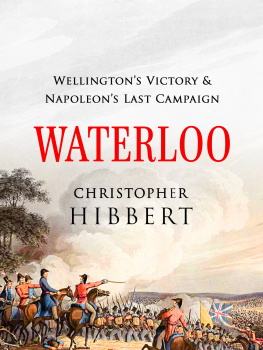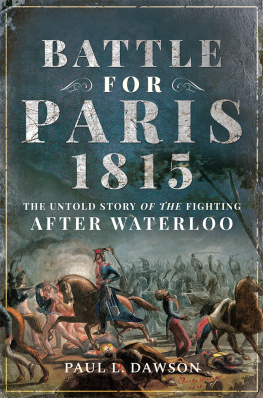First published in Great Britain in 2004 by
Pen & Sword Military
an imprint of
Pen & Sword Books Ltd
47 Church Street
Barnsley
South Yorkshire
S70 2AS
Copyright Jonathan Gillespie-Payne 2004
ISBN 1-84415-050-X
The right of Jonathan Gillespie-Payne to be identified as Author of the Work
has been asserted by him in accordance with the Copyright, Designs and
Patents Act 1988.
A CIP catalogue record for this book is
available from the British Library
All rights reserved. No part of this book may be reproduced or transmitted
in any form or by any means, electronic or mechanical including
photocopying, recording or by any information storage and retrieval system, without
permission from the Publisher in writing.
Typeset in Palatino
Printed and bound in Great Britain by CPI UK
For a complete list of Pen & Sword titles, please contact
Pen & Sword Books Limited
47 Church Street, Barnsley, South Yorkshire, S70 2AS, England
E-mail: enquiries@pen-and-sword.co.uk
Website: www.pen-and-sword.co.uk
Waterloo In the footsteps of the Commanders is a fascinating guide to the Battle of Waterloo, providing great insight into the character and ability of the key protagonists. Wellington and Napoleon have been the subject of many biographies and their place in history has made them particularly well known but how many people really know what influences guided their actions at Waterloo?
This book gets inside the minds of the Commanders, providing interesting and thought-provoking insights to the horror and chaos of the battlefield of Waterloo and the difficulty of commanding such large forces as they lock in close combat.
By focusing on the Commanders, Jonathan Gillespie-Payne has highlighted the differing personalities, their natural ability and military competence in the context of a most complex battle. The outcome of the Battle of Waterloo, which hung in the balance to the final hour, rested on the Commanders decision-making under enormous pressure and without timely information on the enemys future intentions. This was a battle won by the discipline and the stubborn determination of the Infantry. Almost half of the Infantry Officers present were either killed or wounded. In the case of the 3rd Battalion The Royal Scots, four Officers and the Sergeant Major were killed whilst carrying the Kings Colour alone.
The difficulties of command and control have been paramount in every battle throughout history from the earliest times to modern day combat with secure radio and data communications. This lively and exciting guide brings to life the reality of the Commanders responsibility and the impact of their leadership on the lives of some 200,000 individuals on the battlefield.
While the dedicated military historian will be stimulated by Jonathan Gillespie-Paynes analysis, this guide will be easily assimilated by those with little knowledge of warfare. It has been particularly pleasant for me to see one of the young officers who served with me when I commanded the 1st Battalion The Royal Scots in Germany in the mid-1980s tackle such a complicated subject with such clarity. He had a flair for military history then which is so evident in this guide, Jonathans first book; Waterloo In The Footsteps Of The Commanders is an outstanding read for the expert and lay person alike.
MAJOR GENERAL MARK STRUDWICK CBE, THE CASTLE, EDINBURGH
Ever since I was a young boy, I have held an untamed curiosity for the events of 18 June 1815. Initially it was the splendour of the Napoleonic era, the uniforms, the romance, but as I have grown older, I have been captivated by the personalities and how they interacted. As a former soldier, and one who has known that gut-wrenching fear the individual feels when they face battle for the first time, the ability of the soldiers to withstand what they did that day is almost unfathomable. It was, therefore, only logical that one of the first ports of call when I went to live in Brussels for two years would be the battlefield at Waterloo.
I was bitterly disappointed when I first visited. The Belgians had built a huge memorial to the Prince of Orange and in the process had destroyed the sunken road and turned the centre of the Allied line around this monument into a cheap and tacky tourist trap selling expensive and shabby tourist trinkets. I can only agree with the Duke of Wellington when he declared after visiting Waterloo in the 1820s that they have spoilt my battlefield. I looked to buy a guide, one that was compact, readable, contained enough detail to satisfy my curiosity but not too much to bog me down and detract from my tour of the battlefield. The only guide I could find in English was evidently aimed at bus groups and had nowhere near the information I wanted or indeed already knew, so I decided to tour the battlefield alone with only my own knowledge.
By the end of the day, I was stunned and found myself asking who had won the battle anyway? The local preference for Napoleon was so strong, anyone who visited the place without prior knowledge would have assumed a French victory and assumed that this bloody field was the reason why the nations of Europe have come together to form a community that will eventually become one enormous common identity. Belgian self-promotion? Wounded French pride justifying defeat? British reserve unable to blow ones own trumpet?
I decided at that point the battlefield deserved a guide book, not only one that accurately placed, translated and explained the many memorials, explained the events of the battle both on 18 June and also in the greater context, but also took on a more personal angle. What exactly did the commanders see that day? The valley between the opposing armies must have been a dark, smoke-filled hell hole choked with blood and torn bodies and certainly would not have provided the sort of views one sees today. And who were the commanders? Wellington and Napoleon surely; this was the title fight, the two greatest captains of their day meeting for the first time. But it wasnt that simple. Napoleon had given command of his Left Wing to Marshal Michel Ney, the most colourful and probably most maligned of all of Napoleons twenty-six soldiers he promoted to the Marshalate. Ney was the French battle captain that day, responsible for the tactical handling of the army, leaving Napoleon to control the strategic level. It therefore makes sense to look at both Napoleon and Ney when touring the battle from the French command perspective. All three men were different; Wellington the consummate professional soldier, driven by duty; Napoleon the military genius whose ambition knew no bounds and Ney, the barrel coopers son who rose from the ranks with a Marshals baton in his knapsack and sought only the sort of glory that a schoolboy dreams of.
The result of my wanderings around the battlefield of Waterloo is this book, yet another in the in a long line of books about the most written about battle in world history. It was written for a reason, born out of frustration because of the lack of specific material for my needs. It is compact, hopefully easy to read and contains just enough detail to appeal to both the enthusiast and the uninitiated. My wish is you come away from the battlefield with not only a clear understanding of what happened, but why it happened and why events ordered by the respective commanders unfolded. I believe this guide needed to be written to give that understanding and because when 50,000 men become casualties at the rate of just under 100 per minute, they deserve that understanding from future generations.
JGP
Farnham
December 2003
PART ONE
The Protagonists
This is a man with whom I
shall have to deal







